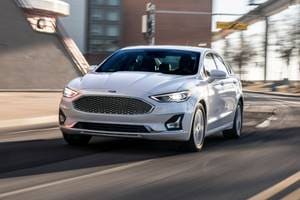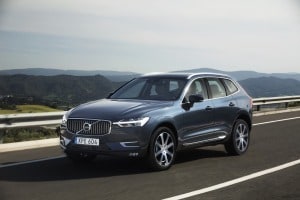Ford Posts Record NA Profits Fueled by New Models
Ford Motor Co. posted improved first-quarter earnings and a record profit in its home North American market on strong sales and richly contented new models, most notably the Ford Fusion and Ford Escape, as well as stalwarts Ford F-150 and Ford Explorer.
Ford earned $1.6 billion in net income in the first quarter, up $215 million from a year ago. Pre-tax profit was $2.1 billion, down $147 million. Cash flow was $700 million, with liquidity of $34.5 billion at quarter's end. Revenue grew 10 percent to $32.4 billion globally.
Ford's pre-tax profit of $2.4 billion in North America marked its best-ever quarter since the automaker began breaking out financial performance by region. That compared to $2.1 billion in the year-ago quarter and the previous quarterly record of $2.3 billion in the third quarter of 2012.
But in contrast to the strong North American results, Ford lost $462 million — steeper than the $149 million lost in the year-ago quarter -- in worsening Europe. Ford is restructuring operations by moving toward plant closures in the next year and introducing new products. It still intends to be profitable in Europe in 2015. Ford also lost money in South America — for the first time in nearly a decade — due to currency issues in Venezuela and Argentina.
The automaker eked out a small $6-million profit, versus a $95 million loss) in Asia-Pacific-Africa (including China). The company is investing heavily in construction of seven new plants (two in China) and launching new products. In China, Ford captured record market share, thanks to the Ford Focus. In addition to Focus, the new Ford Ranger pickup truck is selling well in the Asia-Pacific region.
Meanwhile, Ford's best-ever quarter in North America came on the strength of higher volume of vehicle sales — sales were up 10.9 percent from the year-ago quarter. Sales of revamped models, like the Ford Fusion and Ford Escape, were buttressed by robust sales of the venerable Ford F-Series pickups and Ford Explorer SUV. U.S. market share edged .7 of a percentage point higher to 16.2 percent of the U.S. market. The time Ford vehicles spent on the dealership lot also declined from the first quarter 2013 compared with a year ago at 53 days versus 57 days, according to Edmunds.com's Days-to-Turn calculation of inventory, the time from a vehicle being delivered to the dealer to being purchased by a consumer.
In addition to higher volume, Ford's financial performance was helped by the fact that incentives were down. Edmunds.com's proprietary Total Cost of Incentives (TCI) calculation shows the average Ford incentive was $2,700 per vehicle during the first quarter, down 2.2 percent from the year-ago's $2,762. Further, Ford is fetching top-dollar on those sales as consumers buy the high-end trim levels and load their Fords with equipment.
The newly redesigned Ford Fusion was among the star performers in the first quarter and a case study in Ford's U.S. performance. The midsize sedan segment, now the largest volume segment in the U.S., saw new models duke it out for sales leadership. Sales for the top four volume leaders surged in March, the last month of the quarter.
The Nissan Altima, new as a 2013 model introduced last June, edged out the Honda Accord, new as a 2013 model introduced last fall, and Toyota Camry, new as a 2012 model in fall 2011, for the No. 1 sales spot in March.

An Edmunds.com analysis shows 36 percent of Fusion shoppers on the Edmunds website in the first quarter configured the midsize sedan at styles and with equipment that pushed the price tag to $30,000 or higher; 27 percent of actual buyers spend $30,000 or more for a Fusion.

Still, the True Market Value (TMV), Edmunds.com's proprietary calculation of transaction prices indicating what consumers should pay, to $26,544, the highest of any midsize sedan except for the Subaru Outback at $27,198 TMV.

Ford CFO Bob Shanks, in a one-on-one interview with Edmunds.com, cautioned that Ford and others, could find themselves coming under pricing pressure as the Japanese yen weakens, giving Japanese automakers room to market more heavily and re-position vehicles to have more content but with the same price.
In addition, though consumer interest in the Fusion was strong particularly in the early part of the first quarter — as measured by Edmunds.com's shopping consideration (a metric that indicates marketing effectiveness) and purchase intent (a metric that correlates directly with sales four to six weeks later), both metrics were trending down near the end of the quarter. The Fusion was being surpassed in those metrics by Accord, Altima and Camry.
Some Wall Street analysts expressed concern in Ford's conference on quarterly earnings that Ford's operating margin — still a stunningly high 11 percent in North America — edged slightly lower during the quarter. However, Ford executives said it should not raise concerns as it is due to the automaker adding workers to keep up with increasing demand — including adding factory capacity in Michigan to build more Ford Fusion models and shifting engine production from Spain to Ohio — as well as higher costs associated with engineering more future products.





